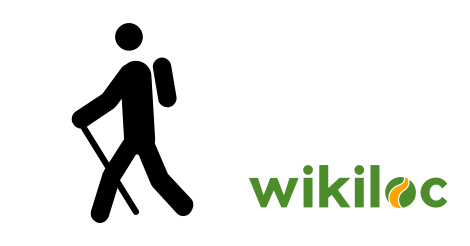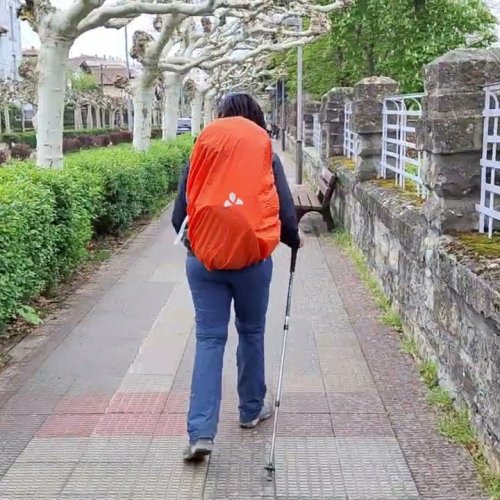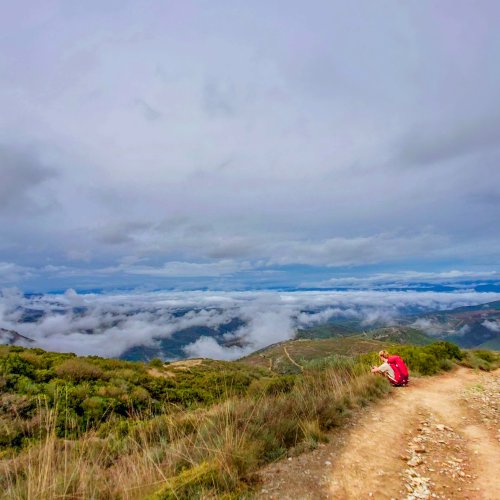Do reply about how OSMand did with the job you had for it. I like the app but it isn't as simple to use as Maps.me
I got a bit carried away with my quickie review . . .
Both Locus Map and OsmAnd use OpenStreetMaps (OSM) as their underlying map source, which is why the maps are so cheap. OSM maps are usually excellent, often amazingly so. You have to pay an extra ($5.99) for OsmAnd contour overlays, but contours/topo information is free in Locus Map Pro.
Both apps show routes for many well-known walks eg Via Francigena, the various Ways of St James (Europe); the INT and Jerusalem Trail in Israel (my current project country).
The free version of Locus Map gives you 3 free maps. You can buy more maps using Locus ‘coins’ (nothing like bitcoin, just accounting tokens which are non-tradeable and useless anywhere else). 100 coins cost me $A1.45, and a typical map of say Italy might cost 30 or 50 of these ‘coins’. Some tiny countries (eg Solomon Islands) cost only about 5 coins. The point being that map costs are negligible.
OsmAnd Unlimited costs $14.99 to buy (there is also a subscription option), but you get unlimited downloads. Locus Map Pro costs $10.99 to buy, but you pay extra for new maps.
Both OsmAnd and Locus Map use BRouter (so does OruxMaps) as their underlying ‘auto route generator’. The version of BRouter on Locus Map gives you about 1400MB of free map tiles (ie map regions which ‘tile’ the entire globe). The tile for Israel (which also includes Lebanon, Jordan, parts of Syria and Iraq), was only 14MB.
But generating an automatic route in Locus Map Pro using BRouter is frustratingly non-intuitive and clunky. The reason is that BRouter is a plugin and not tightly integrated into Locus Map and you have to pick your way through its complexity.
By contrast, OsmAnd is a pleasure to use because BRouter has been coded into the app and is invisible to the user. You just choose the start and end points and the app produces an excellent route with an elevation chart and other metrics (so does Locus Map). I used OsmAnd to make a hiking route for a part of Israel I plan to walk and the app routed me off main roads where walking tracks existed. Even better, the route looked sensible, with no crazy diversions, which minimizes clean-up work and tweaks.
BTW, any of these ‘auto route generators’ only work if the map shows actual roads and tracks. If you are hiking in forest with no (or changing) tracks like parts of the Via Francigena for example, they are useless.
If your route is straightforward and simple it would probably be better to plot your own WPs instead of using an auto-generator to produce a draft which you have to tweak. Both OsmAnd and Locus Map have good tools for manual route creation, although it is a bit of a pain doing it on a small phone screen.
There is a learning curve with both these apps. It seems to me that anything out of the ordinary in any nav app requires patience to figure out and get right. And you have forgotten it when you come to do the same thing months later! Or is it only me?
There is plenty of jargon to master and it is not always easy to find exactly what you need among all the options and menus. Both apps have a large degree of functionality that can be a bit confusing. It’s my biggest gripe with Locus Map Pro. There is so much functionality built in that it can obscure the basic essentials. OsmAnd seems to have a simpler interface – at least on my very quick superficial look at it.
Both apps are excellent and there is little to choose between them. The choice might come down to aesthetics and which app you find the least complicated and easiest to use. But if I were choosing purely on the auto-generate feature to create routes, OsmAnd would win hands down. It’s fantastic and I will test more of its nav features.
Bob M


















